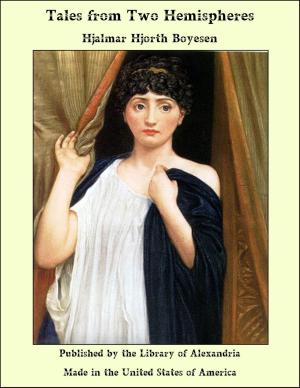England in the Days of Old
Nonfiction, Religion & Spirituality, New Age, History, Fiction & Literature| Author: | William Andrews | ISBN: | 9781465583925 |
| Publisher: | Library of Alexandria | Publication: | March 8, 2015 |
| Imprint: | Language: | English |
| Author: | William Andrews |
| ISBN: | 9781465583925 |
| Publisher: | Library of Alexandria |
| Publication: | March 8, 2015 |
| Imprint: | |
| Language: | English |
This volume of new studies on old-time themes, chiefly concerning the social and domestic life of England, is sent forth with a hope that it may prove entertaining and instructive. It is a companion work to “Bygone England,” which the critical press and reading public received with a warm welcome on its publication, and thus encouraged me to prepare this and other volumes dealing with the highways and byways of history. To trace the origin of the wig our investigations must be carried to far distant times. It was worn in Egypt in remote days, and the Egyptians are said to have invented it, not merely as a covering for baldness, but as a means of adding to the attractiveness of the person wearing it. On the mummies of Egypt wigs are found, and we give a picture of one now in the British Museum. This particular wig probably belonged to a female, and was found near the small temple of Isis, Thebes. “As the Egyptians always shaved their heads,” says Dr. T. Robinson, “they could scarcely devise a better covering than the wig, which, while it protected them from the rays of the sun, allowed, from the texture of the article, the transpiration from the head to escape, which is not the case with the turban.” Dr. Robinson has devoted much study to this subject, and his conclusions merit careful consideration. He also points out that in the examples of Egyptian wigs in the British and Berlin Museums the upper portions are made of curled hair, the plaited hair being confined to the lower part and the sides. On the authority of Wilkinson, says Dr. Robinson, “these wigs were worn both within the house and out of doors. At parties the head-dress of the guests was bound with a chaplet of flowers, and ointment was put upon the top of the wig, as if it had really been the hair of the head.”
This volume of new studies on old-time themes, chiefly concerning the social and domestic life of England, is sent forth with a hope that it may prove entertaining and instructive. It is a companion work to “Bygone England,” which the critical press and reading public received with a warm welcome on its publication, and thus encouraged me to prepare this and other volumes dealing with the highways and byways of history. To trace the origin of the wig our investigations must be carried to far distant times. It was worn in Egypt in remote days, and the Egyptians are said to have invented it, not merely as a covering for baldness, but as a means of adding to the attractiveness of the person wearing it. On the mummies of Egypt wigs are found, and we give a picture of one now in the British Museum. This particular wig probably belonged to a female, and was found near the small temple of Isis, Thebes. “As the Egyptians always shaved their heads,” says Dr. T. Robinson, “they could scarcely devise a better covering than the wig, which, while it protected them from the rays of the sun, allowed, from the texture of the article, the transpiration from the head to escape, which is not the case with the turban.” Dr. Robinson has devoted much study to this subject, and his conclusions merit careful consideration. He also points out that in the examples of Egyptian wigs in the British and Berlin Museums the upper portions are made of curled hair, the plaited hair being confined to the lower part and the sides. On the authority of Wilkinson, says Dr. Robinson, “these wigs were worn both within the house and out of doors. At parties the head-dress of the guests was bound with a chaplet of flowers, and ointment was put upon the top of the wig, as if it had really been the hair of the head.”















